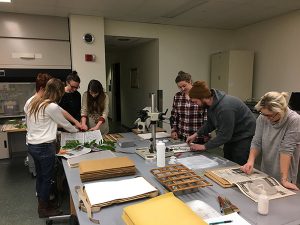Supermarket Botany teaches students about the differences between fruits and vegetables, the differences between roots, stems and leaves and the developmental sequence from flowers to fruits.
The Center for Ecoliteracy includes lessons, articles, and principles to further ecological teaching and learning.
Teaching Issues and Experiments in Ecology. A peer-reviewed publication about ecological education that also includes instructional materials.
National Science Digital Library, the nation’s online library for education and research in Science, Technology, Engineering, Mathematics.
- Plants in Motion website. Watch plants do amazing things and learn some interesting stuff while you are at it!
- Pollen grain germination
- Insect-eating plants
- Basics of pollination.
- Sensitive plant
- Plant growth, time-lapse videos.
- Photosynthesis
Botanical Society of America Resources
- Carnivorous plants pages (great photos and more).
- Sailing seeds: a classroom activity about wind dispersal of seeds.
- One bad apple: students design experiments to study synchrony in ripening fruit.
- Gasping for Breath: Bottle Experiments with Mung Beans: a lab exploring how environmental features like light and volume of air influence growth in mung bean sprouts.
- Plantingscience.org
Below are links to other herbaria, consortia, and data repositories that have herbarium specimen data available online. Many of the collections are in the process of being databased now, so the information available online does not represent the entire collection. More information becomes available every week.
The user interface is different for each of these; some are easier to use than others. What can be done with the data also varies; some of the sites have mapping functions built in, but all do not.
Global
The Global Biodiversity Information Facility (GBIF), which has information on animals as well as plants.
iDigBio, a National Science Foundation-sponsored repository of global natural history data from US institutions.
North America
SEINet Regional Networks of North American Herbaria
The Consortium of Northeastern Herbaria
The Consortium of California Herbaria
The Oklahoma Vascular Plants Database
The Consortium of Pacific Northwest Herbaria
The William and Lynda Steere Herbarium of the New York Botanical Garden
University of Arizona Herbarium
The Billie L. Turner Plant Resources Center at the University of Texas at Austin
Missouri Botanical Garden Herbarium
PLANTS database, maintained by the United States Department of Agriculture. This site doesn’t have specimen information but provides information on the ecology of plants and on their distributions.
Non-North American Resources (English language websites)
Botanical Society of the British Isles
The Australasian Virtual Herbarium
